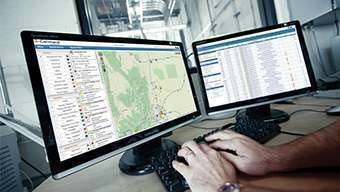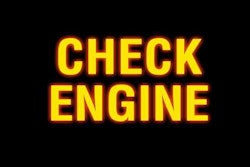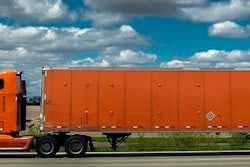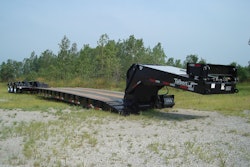 Telematics systems like Navistar’s On Command system will be the linchpin for trucking’s coming technology shift, Navistar CEO Troy Clarke says.
Telematics systems like Navistar’s On Command system will be the linchpin for trucking’s coming technology shift, Navistar CEO Troy Clarke says.Capable of providing deep levels of operating information, today’s trucks have a lot in common with Night Rider’s sidekick KITT.
Sophisticated on-board telematics and diagnostics can feed practically any type of information to the driver, fleet and repair shop, helping slash downtime and improve productivity. However, unless you’re rolling on late-model equipment, you may not be getting all – or any – of the data insights you need to maximize efficiency.
While most of these platforms are designed in conjunction with truck manufacturers, a handful of vendors have entered the marketplace to unlock this information for fleets using aging equipment.
National Truck Protection Co. Inc., (NTP) has teamed up with Geotab and Assured Telematics (ATI) to provide complete fault monitoring services, vehicle diagnostics and regulatory compliance.
“These benefits are available in a real-time application for monitoring vehicles from any mobile device, as well as seamless integration to a number of third-party products,” says Robert Amico, President and CEO of NTP.
The NTP Telematics package communicates to NTP’s proprietary Vehicle Protection Platform and provides customers with real-time fault monitoring and vehicle diagnostics. Amico says customers can then identify critical maintenance issues and proactively maintain vehicles based on fault severity, ultimately avoiding breakdowns.
NTP’s solutions take raw data generated from these systems and produce detailed analysis on real-time activities and historical records.
Amico says the reports are highly visual and instantly readable with simple tables, charts, maps and more, tailored to each customer’s unique needs and goals.
Geotab, too, has partnered with HDA Truck Pride to offer similar services that can also feed diagnostic data to the truck parts distributor’s network.
The all-makes, open system retrofit unit works off GPS signal and can route fault codes via geo-fencing to the closest in-network service provider.
Upcoming Event

Navigating Disruption
A new administration, changing regulations, economic growth and emerging technologies will transform the trucking industry in 2017 and beyond. Do you have the insights and strategies you need to succeed? Hear from speakers from Peloton, Freightliner, U.S. Express and more at the 2017 CCJ Symposium.
Discover the CCJ Symposium! →
Geotab introduced its GO7 in 2014, the sixth upgrade to its GO device lineup since its rollout in 1997. The latest iteration, in addition to the standard CAN bus, the Mid-Speed CAN and Single Wire CAN are supported for legacy vehicles. There are also four manufacturer discretion interfaces, which can be configured in firmware to fit different custom peripherals.
Late last year, Mack Trucks and Volvo Trucks North America announced an upcoming partnership Geotab that will enable connectivity for older Mack and Volvo trucks not currently equipped with the companies’ integrated telematics solutions.
The program, likely to debut this year, will bring vehicle uptime connectivity to 2010 model year and older trucks, according to David Pardue, Mack vice president of connected vehicles and uptime services.
“The easy accessibility of this information will enable customers to make informed decisions to enhance uptime, productivity, fuel efficiency, compliance and safety,” adds Conal Deedy, director of connected services for Volvo Trucks. “We have many fleets that are using Remote Diagnostics service on their newer model trucks (2013 model year and newer) and getting the value of 24/7 Volvo Action Service, ASIST online case communication and the real-time connectivity. These customers are seeing the benefit of the service on their newer trucks but they want to have support on their whole fleet.”
Volvo introduced its Remote Diagnostics in 2012, which proactively monitors key truck components for critical fault codes including the engine, Volvo I-Shift automated manual transmission and after-treatment systems. If a potential issue is detected, Remote Diagnostics evaluates the code, develops an analysis for repair planning and ensures repair instructions and parts are available, all while the truck remains in service.
Information about a potential issue is captured and communicated electronically through ASIST, Volvo’s web-based tool that enables real-time communication between customers, dealers and Volvo Action Service staff at Volvo’s Uptime Center, as well as Volvo field personnel.
“The customer is always in charge of where they would like to have the truck serviced,” Deedy adds.
Deedy says the Volvo Action Services agent in the company’s Uptime Center will contact the customer and support them through the service process regardless of where the truck will be serviced.
“The driving mission of Volvo Action Service agents is to support the customer through the issue to be sure it is addressed efficiently and effectively,” he says.
Most Detroit-powered Freightliner and Western Star trucks assembled since April 2011 were built with the connectivity platform that delivers Detroit Connect Virtual Technician remote diagnostic service, but Greg Treinen, Daimler Trucks North America manager of connectivity, says that platform is also compatible with older EPA 2010-era Detroit-powered Freightliner and Western Star trucks.
“Retrofit kits are available through Freightliner and Western Star dealers or through our telematics partners, Zonar Systems,” he says. “Fleets with trucks older than EPA10 can purchase a variation of the Virtual Technician platform produced by Zonar Systems, the V3 platform.”
Zonar’s V3 platform delivers fault code information to its Ground Traffic Control Web-based fleet management interface. While the V3 platform cannot deliver the OEM diagnostic insights that Virtual Technician provides, Treinen says it can deliver fleets information pulled from the truck’s J1939 network to help them stay informed when their vehicles experience a fault event.
Also in this series:













